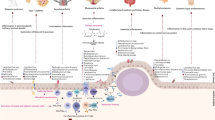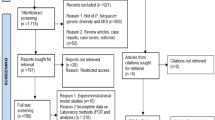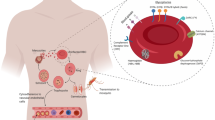Summary
Numerous studies have been done to explore the association between mannose-binding lectin two (MBL2) gene polymorphisms and the risk of tuberculosis (TB). However, the results are inconsistent. We performed a meta-analysis to investigate whether polymorphisms in the MBL2 gene were associated with TB risk. Databases including PubMed, Medline, Chinese Biomedicine Database, China National Knowledge Infrastructure, Wanfang Database, and Weipu Database were searched to find relevant articles published up to 2 October, 2012. Odds ratio (OR) with 95% confidence interval (CI) was used to evaluate the strength of association. All statistical tests were performed by using Revman 5.1 software and STATA 11.0 software. Six case-control studies including 1106 cases and 1190 controls were accepted in the meta-analysis. The results indicated that individuals carrying the MBL2 codon 54 B allele may have an increased risk of TB as compared with AA homozygotes (BB+AB vs. AA: OR=1.52, 95% CI: 1.22–1.88), whereas MBL2 +4 P/Q was possibly not associated with TB susceptibility in Chinese population.
Similar content being viewed by others
References
WHO (2011) Global tuberculosis control: WHO report 2011. Geneva: WHO. WHO/HTM/TB/2011.16. (Accessed October 13, 2012 at http://www.who.int/tb/publications/global_report/en/.
Zhang Y, Zhang J, Zeng L, et al. The -2518A/G polymorphism in the MCP-1 gene and tuberculosis risk: a meta-analysis. PLoS One, 2012,7(7):e38918
Turner MW. Mannose-binding lectin: the pluripotent molecule of the innate immune system. Immunol Today, 1996,17(11):532–540
Lee YH, Witte T, Momot T, et al. The mannose-binding lectin gene polymorphisms and systemic lupus erythematosus: two case-control studies and a meta-analysis. Arthritis Rheum, 2005,52(12):3966–3974
Gupta K, Gupta RK, Hajela K, et al. Disease associations of mannose-binding lectin & potential of replacement therapy. Indian J Med Res, 2008,127(5):431–440
Heitzeneder S, Seidel M, Förster-Waldl E, et al. Mannan-binding lectin deficiency-Good news, bad news, doesn’t matter? Clin Immunol, 2012,143(1):22–38
Madsen HO, Satz ML, Hogh B, et al. Different molecular events result in low protein levels of mannan-binding lectin in populations from southeast Africa and South America. J Immunol, 1998,161(6):3169–3175
Selvaraj P, Narayanan PR, Reetha AM. Association of functional mutant homozygotes of the mannose binding protein gene with susceptibility to pulmonary tuberculosis in India. Tuber Lung Dis, 1999,79(4):221–227
Bellamy R. Identifying genetic susceptibility factors for tuberculosis in Africans: a combined approach using a candidate gene study and a genome-wide screen. Clin Sci (Lond), 2000,98(3):245–250
Mombo LE, Lu CY, Ossari S, et al. Mannose-binding lectin alleles in sub-Saharan Africans and relation with susceptibility to infections. Genes Immun, 2003,4(5):362–367
Druszczyńska M, Strapagiel D, Kwiatkowska S, et al. Tuberculosis bacilli still posing a threat. Polymorphism of genes regulating anti-mycobacterial properties of macrophages. Pol J Microbiol, 2006,55(1):7–12
El Sahly HM, Reich RA, Dou SJ, et al. The effect of mannose binding lectin gene polymorphisms on susceptibility to tuberculosis in different ethnic groups. Scand J Infect Dis, 2004,36(2):106–108
Begg CB, Mazumdar M. Operating characteristics of a rank correlation test for publication bias. Biometrics, 1994,50(4):1088–1101
Egger M, Davey Smith G, Schneider M, et al. Bias in meta-analysis detected by a simple, graphical test. BMJ, 1997,315(7109):629–634
Feng FM, Wang D, Guo M, et al. A case control study on mannose-binding protein genetic polymorphism and susceptibility to pulmonary tuberculosis. Mod Prevent Med, 2007,34(3):438–440
Zhou J, Zhang WJ, Zhang J, et al. Correlation of polymorphism of mannan-binding lectin gene to tuberculosis. Progr Mod Biomed, 2010,10(18):3569–3573
Li Y, Zhang WJ. Progress in mannose-binding lectin and its genetic susceptibility to tuberculosis. Chin J Immun, 2010,26(10):948–952
Lian YY, Han M, Le J. Progress in tuberculosis susceptibility genes. Int J Lab Med, 2008,29(10):896–898
Guo YL, Liu Y, Song CX, et al. Progress in tuberculosis susceptibility genes. Tuber Thor Tumor, 2009,1:62–64
Liu ZB, Zheng RJ, Xiao HP, et al. The correlation between polymorphisms of genes with susceptibility to tuberculosis and the clinical characteristics of tuberculosis in 459 Han patients. Zhonghua Jie He He Hu Xi Za Zhi (Chinese), 2011,34(12):923–928
Liu YD, Zheng RJ, Xiao HP, et al. Study on the correlation between polymorphisms of genes with susceptibility to tuberculosis and drug-resistant tuberculosis in Chinese Han population. Zhonghua Liu Xing Bing Xue Za Zhi (Chinese), 2011,32(3):279–284
Feng FM, Liu Q, Guo M, et al. Relationship between mannose-binding protein P54 allele polymorphisms and susceptibility to pulmonary tuberculosis. Chin J Publ Health, 2006,22(11):1353–1355
Liu W, Zhang F, Zhao QM, et al. Sequence variations in the mannose binding lectin gene and their possible relationship in susceptibility to tuberculosis in the Chinese Han nationality. Chin Trop Med, 2006,6(3):387–389
Feng FM, Guo M, Liu Q, et al. Study on mannose-binding protein gene polymorphisms and susceptibility to pulmonary tuberculosis. Zhonghua Liu Xing Bing Xue Za Zhi (Chinese), 2006,27(12):1082–1085
Li Y, Pei XY, Zhang SY, et al. The usage of multifactor dimensionality reduction method in the research of tuberculosis susceptible gene-gene interactions. J Ningxia Med Univ (Chinese), 2011,33(2):138–139
Sun B, Cui XQ, Guo YF, et al. Association study of gene polymorphism of mannose binding lectin and pulmonary tuberculosis. Chongqing Med (Chinese), 2012,41(19):1917–1919
Zhang J, Deng XL, Wang X, et al. A study on the association of polymorphisms of the MBL gene with the susceptibility to tuberculosis of Xinjiang Hazakhs. J Nongken Med (Chinese), 2011,33(2):135–138
Liu W, Zhang F, Xin ZT, et al. Sequence variations in the MBL gene and their relationship to pulmonary tuberculosis in the Chinese Han population. Int J Tuberc Lung Dis, 2006,10(10):1098–1103
Feng FM, Hao JQ, Chen Y, et al. Relationship of gene-gene interaction of VDR and MBP loci with susceptibility to pulmonary tuberculosis of Han population in Tangshan Hebei. Chongqing Med J (Chinese), 2010,39(12):1527–1529
Li Y, Wu F, Zhang L, et al. Association between polymorphism of MBL gene with susceptibility to tuberculosis in Han population in Xinjiang. Chin J Zoon (Chinese), 2011,27(9):769–773
Fang GX, Yin CL. Research on relationship of polymorphism of mannose-binding lectin gene with susceptibility to tuberculosis in Zhuang population. Int J Respir, 2011,31(6):428–430
Zhou J, Deng XL, Wang X, et al. Study on the correlation between MBL-H/L, P/Q polymorphisms with the susceptibility of TB in Xinjiang Uighurs population. Med Healthc Appar, 2011,18(7):976–978
Zhou J, Zhang WJ. Correlation between MBL-A/B gene with the susceptibility of tuberculosis in Xinjiang Uighur population. Chin J Antituberc (Chinese), 2012,34(7):445–451
Denholm JT, McBryde ES, Eisen DP. Mannose-binding lectin and susceptibility to tuberculosis: a meta-analysis. Clin Exp Immunol, 2010,162(1):84–90
Garred P, Larsen F, Madsen HO, et al. Mannose-binding lectin deficiency-revisited. Mol Immunol, 2003,40(2–4):73–84
Chatterjee D. The mycobacterial cell wall: structure, biosynthesis and sites of drug action. Curr Opin Chem Biol, 1997,1(4):579–588
Polotsky VY, Belisle JT, Mikusova K, et al. Interaction of human mannose-binding protein with Mycobacterium avium. J Infect Dis, 1997,175(5):1159–1168
Garred P, Larsen F, Seyfarth J, et al. Mannose-binding lectin and its genetic variants. Genes Immun, 2006,7(2):85–94
Dommett RM, Klein N, Turner MW. Mannose-binding lectin in innate immunity: past, present and future. Tissue Antigens, 2006,68(3):193–209
Author information
Authors and Affiliations
Corresponding author
Rights and permissions
About this article
Cite this article
Shi, J., Xie, M., Wang, Jm. et al. Mannose-binding lectin two gene polymorphisms and tuberculosis susceptibility in Chinese population: A meta-analysis. J. Huazhong Univ. Sci. Technol. [Med. Sci.] 33, 166–171 (2013). https://doi.org/10.1007/s11596-013-1091-1
Received:
Published:
Issue Date:
DOI: https://doi.org/10.1007/s11596-013-1091-1




